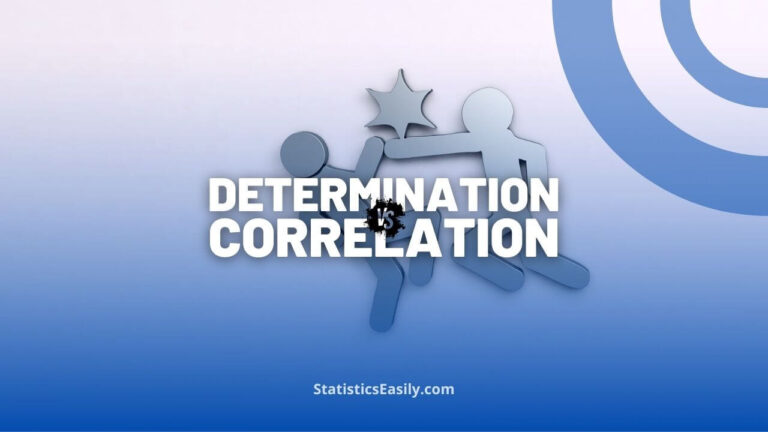Understanding the Null Hypothesis in Chi-Square
The null hypothesis in chi square testing suggests no significant difference between a study’s observed and expected frequencies. It assumes any observed difference is due to chance and not because of a meaningful statistical relationship.
Introduction
The chi-square test is a valuable tool in statistical analysis. It’s a non-parametric test applied when the data are qualitative or categorical. This test helps to establish whether there is a significant association between 2 categorical variables in a sample population.
Central to any chi-square test is the concept of the null hypothesis. In the context of chi-square, the null hypothesis assumes no significant difference exists between the categories’ observed and expected frequencies. Any difference seen is likely due to chance or random error rather than a meaningful statistical difference.
Highlights
- The chi-square null hypothesis assumes no significant difference between observed and expected frequencies.
- Failing to reject the null hypothesis doesn’t prove it true, only that data lacks strong evidence against it.
- A p-value < the significance level indicates a significant association between variables.
Ad Title
Ad description. Lorem ipsum dolor sit amet, consectetur adipiscing elit.
Understanding the Concept of Null Hypothesis in Chi Square
The null hypothesis in chi-square tests is essentially a statement of no effect or no relationship. When it comes to categorical data, it indicates that the distribution of categories for one variable is not affected by the distribution of categories of the other variable.
For example, if we compare the preference for different types of fruit among men and women, the null hypothesis would state that the preference is independent of gender. The alternative hypothesis, on the other hand, would suggest a dependency between the two.
Steps to Formulate the Null Hypothesis in Chi-Square Tests
Formulating the null hypothesis is a critical step in any chi-square test. First, identify the variables being tested. Then, once the variables are determined, the null hypothesis can be formulated to state no association between them.
Next, collect your data. This data must be frequencies or counts of categories, not percentages or averages. Once the data is collected, you can calculate the expected frequency for each category under the null hypothesis.
Finally, use the chi-square formula to calculate the chi-square statistic. This will help determine whether to reject or fail to reject the null hypothesis.
| Step | Description |
|---|---|
| 1. Identify Variables | Determine the variables being tested in your study. |
| 2. State the Null Hypothesis | Formulate the null hypothesis to state that there is no association between the variables. |
| 3. Collect Data | Gather your data. Remember, this must be frequencies or counts of categories, not percentages or averages. |
| 4. Calculate Expected Frequencies | Under the null hypothesis, calculate the expected frequency for each category. |
| 5. Compute Chi Square Statistic | Use the chi square formula to calculate the chi square statistic. This will help determine whether to reject or fail to reject the null hypothesis. |
Practical Example and Case Study
Consider a study evaluating whether smoking status is independent of a lung cancer diagnosis. The null hypothesis would state that smoking status (smoker or non-smoker) is independent of cancer diagnosis (yes or no).
If we find a p-value less than our significance level (typically 0.05) after conducting the chi-square test, we would reject the null hypothesis and conclude that smoking status is not independent of lung cancer diagnosis, suggesting a significant association between the two.
Observed Table
| Smoking Status | Cancer Diagnosis | No Cancer Diagnosis |
|---|---|---|
| Smoker | 70 | 30 |
| Non-Smoker | 20 | 80 |
Expected Table
| Smoking Status | Cancer Diagnosis | No Cancer Diagnosis |
|---|---|---|
| Smoker | 50 | 50 |
| Non-Smoker | 40 | 60 |
Common Misunderstandings and Pitfalls
One common misunderstanding is the interpretation of failing to reject the null hypothesis. It’s important to remember that failing to reject the null does not prove it true. Instead, it merely suggests that our data do not provide strong enough evidence against it.
Another pitfall is applying the chi-square test to inappropriate data. The chi-square test requires categorical or nominal data. Applying it to ordinal or continuous data without proper binning or categorization can lead to incorrect results.
Ad Title
Ad description. Lorem ipsum dolor sit amet, consectetur adipiscing elit.
Conclusion
The null hypothesis in chi-square testing is a powerful tool in statistical analysis. It provides a means to differentiate between observed variations due to random chance versus those that may signify a significant effect or relationship. As we continue to generate more data in various fields, the importance of understanding and correctly applying chi-square tests and the concept of the null hypothesis grows.
Recommended Articles
Interested in diving deeper into statistics? Explore our range of statistical analysis and data science articles to broaden your understanding. Visit our blog now!
- Simple Null Hypothesis – an overview (External Link)
- Chi-Square Calculator: Enhance Your Data Analysis Skills
- Effect Size for Chi-Square Tests: Unveiling its Significance
- What is the Difference Between the T-Test vs. Chi-Square Test?
- Understanding the Assumptions for Chi-Square Test of Independence
- How to Report Chi-Square Test Results in APA Style: A Step-By-Step Guide
Frequently Asked Questions (FAQs)
It’s a statistical test used to determine if there’s a significant association between two categorical variables.
The null hypothesis suggests no significant difference between observed and expected frequencies exists. The alternative hypothesis suggests a significant difference.
No, we never “accept” the null hypothesis. We only fail to reject it if the data doesn’t provide strong evidence against it.
Rejecting the null hypothesis implies a significant difference between observed and expected frequencies, suggesting an association between variables.
Chi-Square tests are appropriate for categorical or nominal data.
The significance level, often 0.05, is the probability threshold below which the null hypothesis can be rejected.
A p-value < the significance level indicates a significant association between variables, leading to rejecting the null hypothesis.
Using the Chi-Square test for improper data, like ordinal or continuous data, without proper categorization can lead to incorrect results.
Identify the variables, state their independence, collect data, calculate expected frequencies, and apply the Chi-Square formula.
Understanding the null hypothesis is essential for correctly interpreting and applying Chi-Square tests, helping to make informed decisions based on data.








